
Enchanting Ourika Valley: Morocco's Serene Oasis
Discover the serene beauty and rich Berber culture of Ourika Valley, a hidden gem in the Atlas Mountains of Morocco.
Nestled in the foothills of the Atlas Mountains, Ourika Valley offers a peaceful escape from the bustling cities of Morocco. Known for its lush greenery, sparkling streams, and traditional Berber villages, this valley is a haven for nature lovers and cultural enthusiasts alike. As you explore the valley, you'll find terraced fields, vibrant wildflowers, and picturesque waterfalls. The Setti Fatma waterfalls are particularly popular, providing an invigorating hike and stunning photo opportunities. The valley's cool climate, even in the summer, makes it an ideal spot to relax and enjoy the natural beauty. The Berber culture is strongly felt throughout Ourika Valley. Visitors can take guided tours to local villages, where they can experience traditional crafts, cuisine, and hospitality. The weekly market in Tnine Ourika is a vibrant display of local life, offering everything from handmade goods to fresh produce. With its blend of natural beauty and cultural richness, Ourika Valley is a must-visit destination for anyone looking to experience the true essence of Morocco.
Local tips in Ourika Valley
- Visit the Setti Fatma waterfalls early in the day to avoid crowds.
- Wear comfortable hiking shoes for exploring the valley's trails.
- Bring cash for the Tnine Ourika market, as many vendors do not accept cards.
- Consider a guided tour to learn more about the Berber culture and traditions.
- Pack a light jacket, as temperatures can be cooler in the valley, even during summer.
Enchanting Ourika Valley: Morocco's Serene Oasis
Nestled in the foothills of the Atlas Mountains, Ourika Valley offers a peaceful escape from the bustling cities of Morocco. Known for its lush greenery, sparkling streams, and traditional Berber villages, this valley is a haven for nature lovers and cultural enthusiasts alike. As you explore the valley, you'll find terraced fields, vibrant wildflowers, and picturesque waterfalls. The Setti Fatma waterfalls are particularly popular, providing an invigorating hike and stunning photo opportunities. The valley's cool climate, even in the summer, makes it an ideal spot to relax and enjoy the natural beauty. The Berber culture is strongly felt throughout Ourika Valley. Visitors can take guided tours to local villages, where they can experience traditional crafts, cuisine, and hospitality. The weekly market in Tnine Ourika is a vibrant display of local life, offering everything from handmade goods to fresh produce. With its blend of natural beauty and cultural richness, Ourika Valley is a must-visit destination for anyone looking to experience the true essence of Morocco.
When is the best time to go to Ourika Valley?
Iconic landmarks you can’t miss
Setti Fadma ( Ourika Valley & 7 Cascades)
Discover Setti Fadma, the enchanting gateway to the Ourika Valley and its breathtaking 7 Cascades, perfect for nature lovers and adventurers alike.
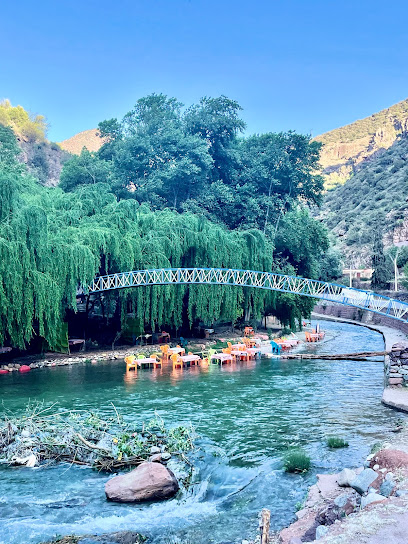
Terres D'Amanar
Discover the enchanting Terres D'Amanar, where adventure meets tranquility in the heart of the Atlas Mountains, offering a unique Moroccan escape.

Cascades Ourika
Explore the serene beauty of Cascades Ourika with its stunning waterfalls, rich culture, and thrilling outdoor adventures await in the Atlas Mountains.
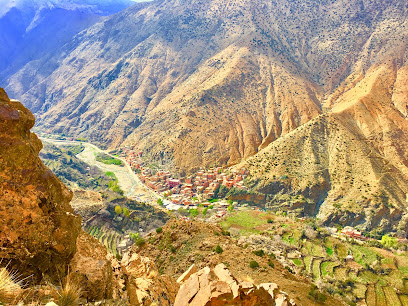
Anima (André Heller Garden)
Experience the serene beauty of Anima Garden in Ourika Valley, a perfect blend of nature and art near Marrakech.

Smile Park
Experience the thrill of adventure at Smile Park, Marrakech's premier amusement park with rides, ATV rentals, and delicious dining options amidst breathtaking scenery.
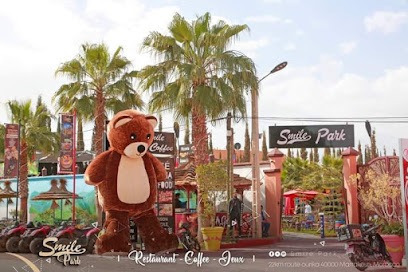
La vallée d'ourika
Experience the breathtaking landscapes and rich culture of La Vallée d'Ourika, a serene escape in the heart of Morocco's Atlas Mountains.
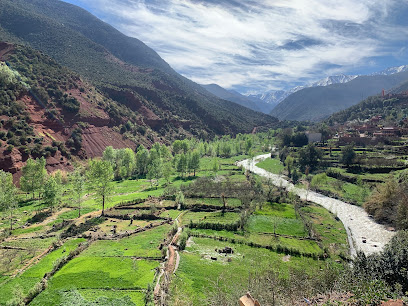
Dar Ikalimo Ourika
Experience tranquility and authenticity at Dar Ikalimo Ourika, a charming guest house amidst the breathtaking landscapes of Morocco's Ourika Valley.
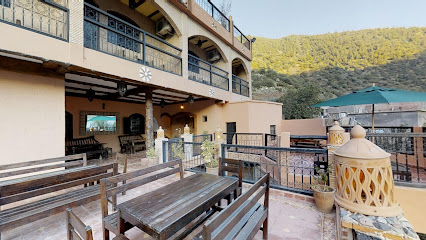
Kasbah Bab Ourika
Experience the breathtaking beauty of the Atlas Mountains and authentic Moroccan hospitality at the luxurious Kasbah Bab Ourika.

Ourika Valley Waterfalls
Experience the breathtaking beauty of Ourika Valley Waterfalls in the Atlas Mountains, a perfect blend of adventure and serene nature.

Maison du meunier berbère
Explore the enchanting Maison du Meunier Berbère and immerse yourself in the rich cultural heritage of the Berber people amidst stunning landscapes.
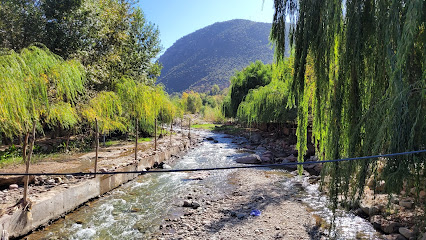
Paradis du Safran Maroc
Experience the enchanting world of saffron at Paradis du Safran in Ourika, where beauty, culture, and cuisine intertwine in a breathtaking setting.
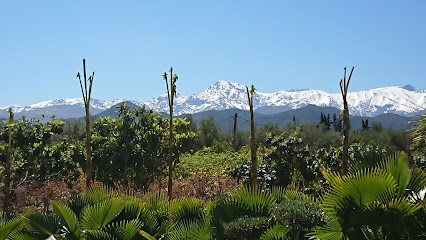
Dar Soulaimane Ourika Marrakech
Discover serenity and cultural richness at Dar Soulaimane in Ourika, where traditional Moroccan hospitality meets stunning mountain landscapes.

Ourika
Experience the stunning beauty and vibrant culture of Ourika Valley, a must-visit destination near Marrakech filled with adventure and rich Berber heritage.
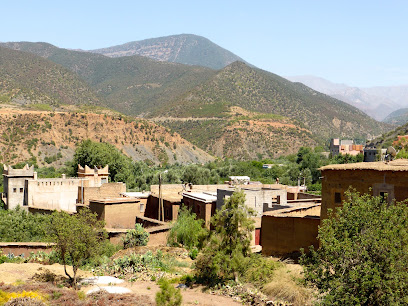
Le Douar Berbère Eco Hôtel Ourika Valley
Discover serenity and sustainability at Le Douar Berbère Eco Hôtel in the picturesque Ourika Valley, a perfect escape into Moroccan nature and culture.

Ourika Lodge
Experience the enchanting Ourika Lodge, where luxury meets nature in the stunning Atlas Mountains of Morocco.

Unmissable attractions to see
Henna Café
Experience the rich flavors of Morocco at Henna Café in Marrakesh, where culinary tradition meets a warm, inviting atmosphere.
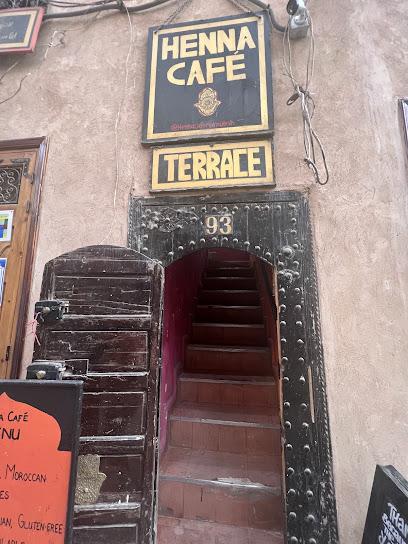
Sources Cascades Ouzoud
Experience the breathtaking beauty of Ouzoud Waterfalls, Morocco's natural wonder, surrounded by lush landscapes and vibrant wildlife.
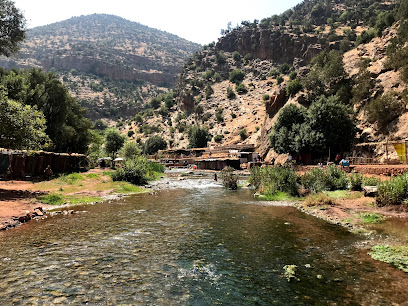
Meilleur Quad Marrakech
Discover the thrill of quad biking through the stunning landscapes of Marrakech at Meilleur Quad Marrakech, an adventure you won't forget.
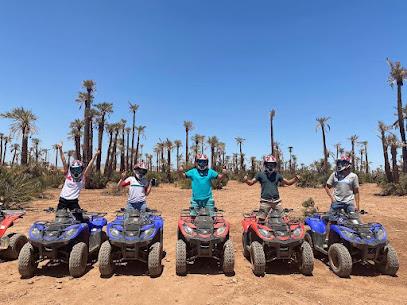
مولاي براهيم
Explore the captivating beauty and rich culture of Moulay Brahim, a quaint Moroccan village nestled in the stunning Azzaden Valley.
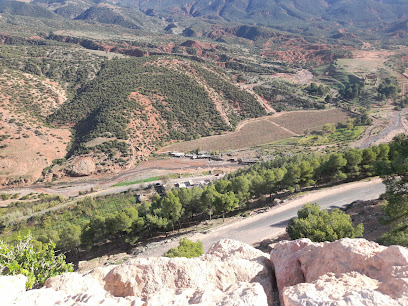
منتزه اوريكا
Discover the breathtaking landscapes and diverse wildlife of منتزه اوريكا, a premier hiking destination in Morocco's stunning natural environment.
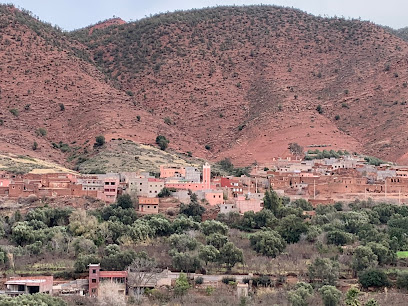
Ourika
Explore the breathtaking Ourika Valley, a scenic escape in the Atlas Mountains with vibrant Berber culture and stunning waterfalls.
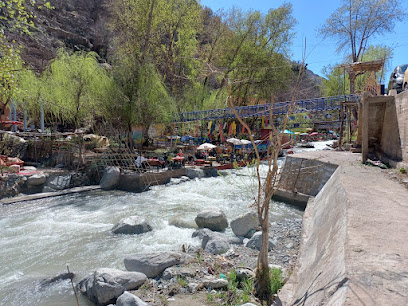
bio-aromatique de l'Ourika Garden
Experience serenity at Bio-Aromatique de l'Ourika Garden, where wellness meets nature in the stunning Ourika Valley.
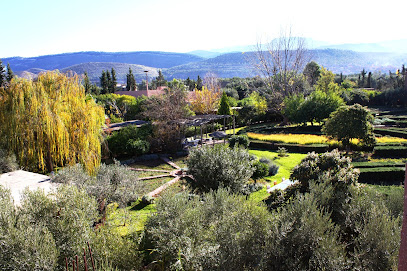
La Rosa Agafay
Experience the enchanting flavors of Moroccan cuisine in the stunning Agafay Desert at La Rosa Agafay, a true culinary oasis.
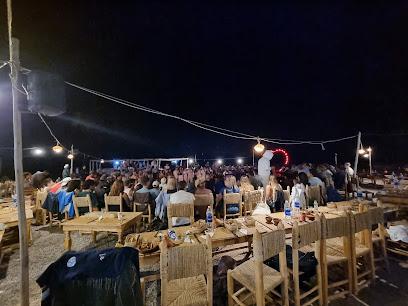
Star Poterie Marrakech
Explore the vibrant world of Moroccan pottery at Star Poterie Marrakech, where tradition and artistry come together in exquisite handcrafted pieces.
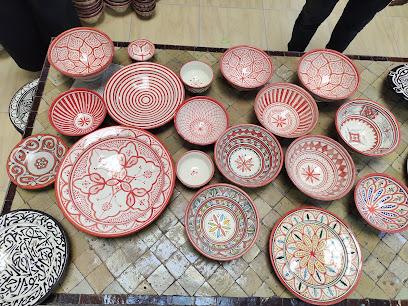
Moroccan Nature Trail
Explore the diverse beauty of Morocco with personalized tours from Moroccan Nature Trails, your premier travel agency in Marrakesh.

Ourika valley
Experience the breathtaking landscapes and rich culture of Ourika Valley, a stunning gem in the Atlas Mountains of Morocco.
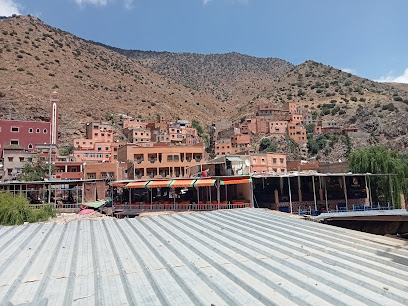
Azrou Melloul West Bank
Experience breathtaking landscapes and rich Berber culture at Azrou Melloul, a stunning tourist attraction in the Ourika Valley.
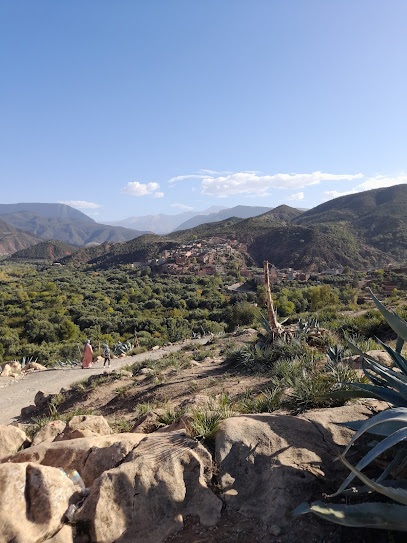
تنمزينضرت ملك خاص
Experience the captivating beauty and rich history of Tanmert Malek Khas, a must-see tourist attraction in Morocco.
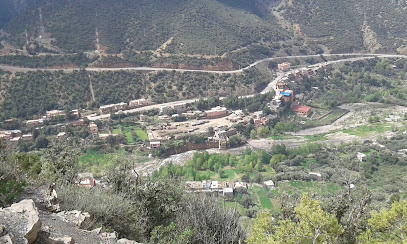
أوريكة اسكين افغرن
Discover the natural beauty and vibrant culture of Ourika Valley, a breathtaking destination in the Atlas Mountains, perfect for adventure and relaxation.
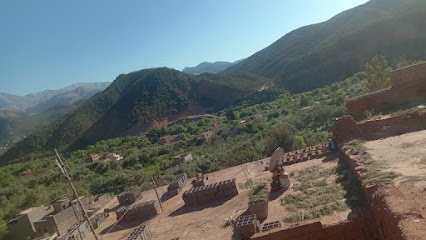
Morocco Unlimited Adventures
Experience the essence of Morocco with Morocco Unlimited Adventures in Marrakesh, offering tailored tours that reveal the country's stunning landscapes and rich culture.
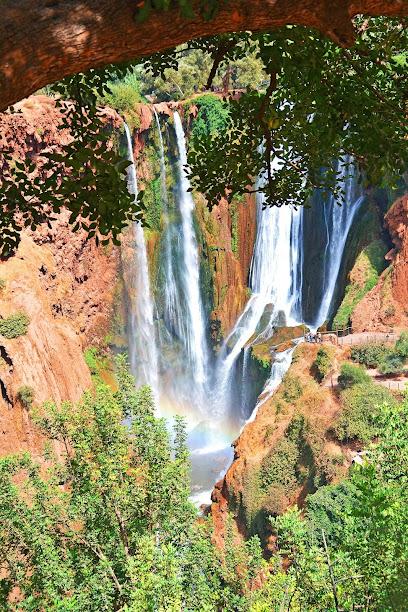
Essential places to dine
La muraille de l'ourika
Discover authentic Moroccan cuisine at La Muraille de l'Ourika amidst stunning mountain views in Ourika Valley.
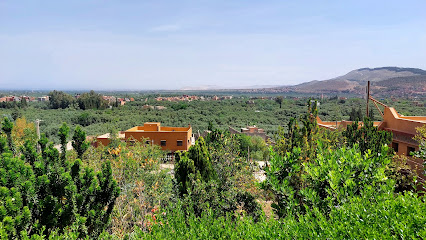
La Clé Des Huiles Ourika
Discover La Clé Des Huiles Ourika - A serene dining experience surrounded by nature's beauty with exquisite Moroccan cuisine.
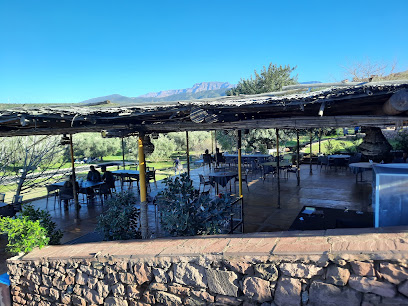
مقهى أزيلال
Discover authentic Moroccan cuisine at Café Azilal in Sti Fadma - a delightful blend of flavors and culture awaits you.
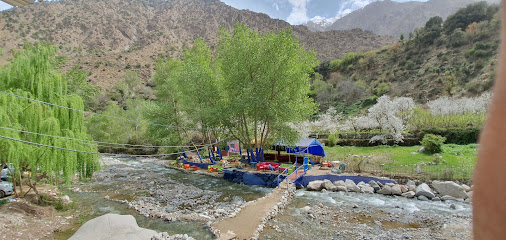
FEDDAN CAFÉ RESTAURANT
Discover authentic Moroccan flavors at Feddan Café Restaurant, where culinary delight meets stunning views in the heart of Marrakesh.
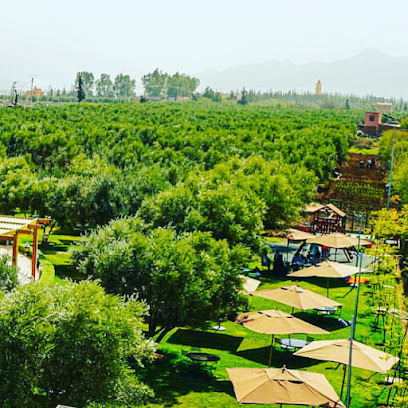
ouberge Kasbah tifirte
Experience authentic Moroccan flavors at Auberge Kasbah Tifirte – where every meal tells a story.
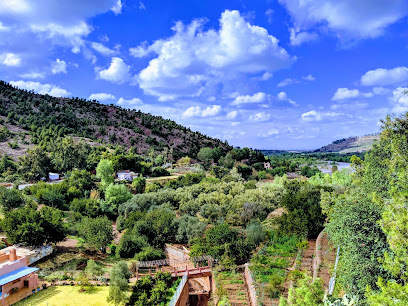
Café Restaurant Azaghar Ourika
Experience authentic Moroccan cuisine in the heart of Ourika Valley at Café Restaurant Azaghar – where flavor meets breathtaking views.
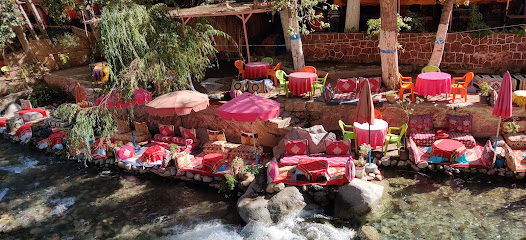
Agdal ourika
Experience authentic Moroccan cuisine with breathtaking views at Agdal Ourika in the scenic Ourika Valley.
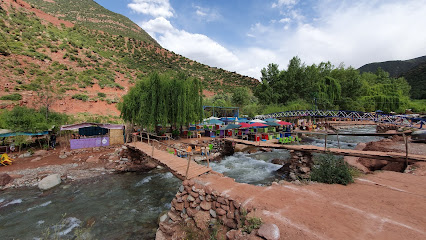
Cafe Restaurant TILILA GARDEN
Discover Café Restaurant TILILA GARDEN: A serene dining haven offering authentic Moroccan cuisine amid stunning landscapes.
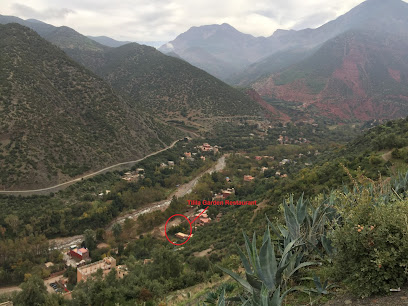
Chez Larbi Ourika Restaurant Maison d'hôtes
Experience authentic Moroccan cuisine at Chez Larbi Ourika, where stunning views meet warm hospitality in the heart of the Atlas Mountains.

Jnane Ayam Atlas
Discover tranquility and organic delights at Jnane Ayam Atlas in the breathtaking Ourika Valley.
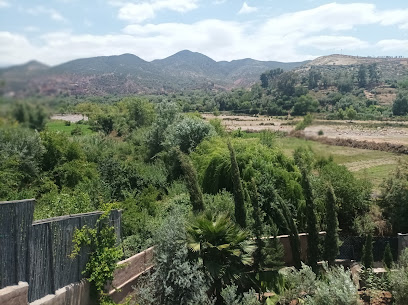
Restaurant Elzguerona
Experience authentic Moroccan cuisine surrounded by stunning landscapes at Restaurant Elzguerona in Vallée d'Ourika.
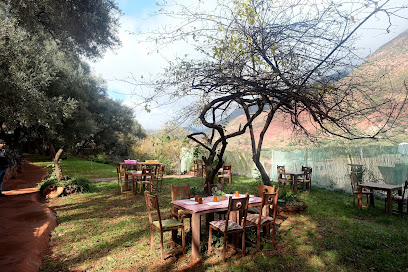
Auberge Ayam Atlas
Discover authentic Moroccan flavors at Auberge Ayam Atlas amidst breathtaking landscapes in Ourika Valley.

La Perle D'ourika-Guesthouse & Restaurant
Discover La Perle D'ourika: A tranquil retreat offering exquisite Moroccan cuisine and charming guesthouse experiences amidst stunning Atlas Mountain scenery.

Hôtel Restaurant Azro
Experience authentic Moroccan hospitality at Hôtel Restaurant Azro in Ourika Valley - a tranquil retreat with exquisite dining options.

Ristorante Almandar
Discover authentic Moroccan cuisine at Ristorante Almandar in Ourika—an affordable gem surrounded by breathtaking landscapes.

Markets, malls and hidden boutiques
Carré Eden
Explore Carré Eden in Marrakech, where modern shopping meets Moroccan charm amidst a variety of stores and delightful dining options.
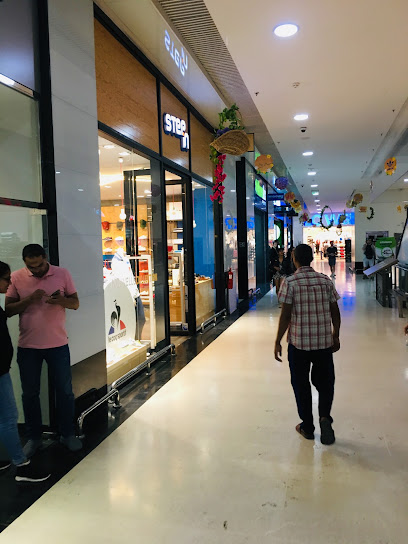
Cascades Ourika
Explore the stunning Cascades Ourika in Morocco's Ourika Valley, a scenic paradise for hiking and rafting enthusiasts.
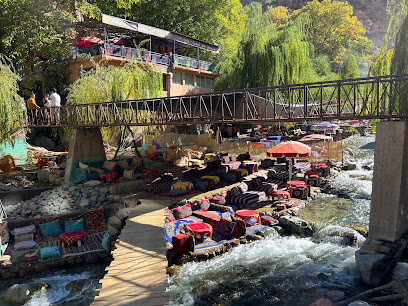
Marjane Market
Explore Marjane Market in Marrakech for a unique shopping experience filled with local flavors and products to take home.
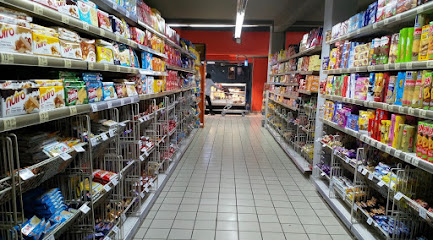
La Clé Des Huiles Ourika
Experience a serene getaway at La Clé Des Huiles Ourika, where stunning landscapes meet exquisite dining and relaxation.
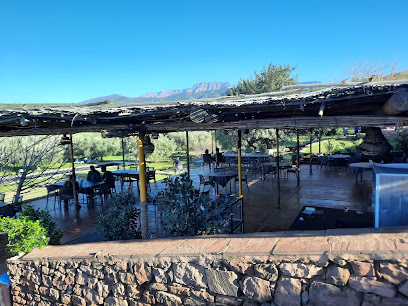
Kasbah Bab Ourika
Discover the beauty and serenity of Kasbah Bab Ourika, a luxurious hotel in the heart of the Ourika Valley, perfect for relaxation and cultural immersion.

Souk MARKET
Discover the Vibrant Souk MARKET in Marrakesh – a cultural shopping experience filled with handmade treasures and local charm.

The Anou Cooperative
Explore the heart of Moroccan craftsmanship at The Anou Cooperative, where every purchase empowers local artisans and celebrates cultural heritage.
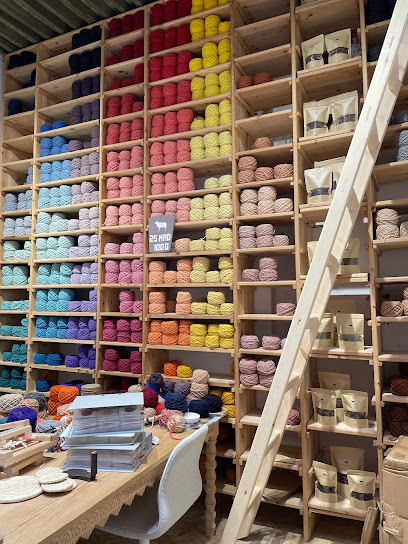
Max & Jan Medina
Discover unique Moroccan fashion at Max & Jan Medina in the heart of Marrakesh's vibrant Medina, where culture meets style.
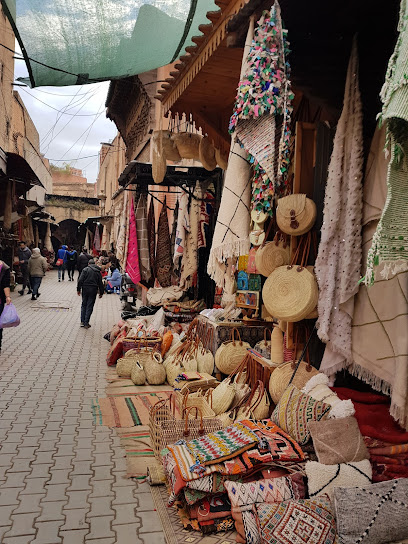
Souk cherifia
Discover the charm of Souk Cherifia, a vibrant shopping destination in Marrakech offering traditional crafts and modern fashion.
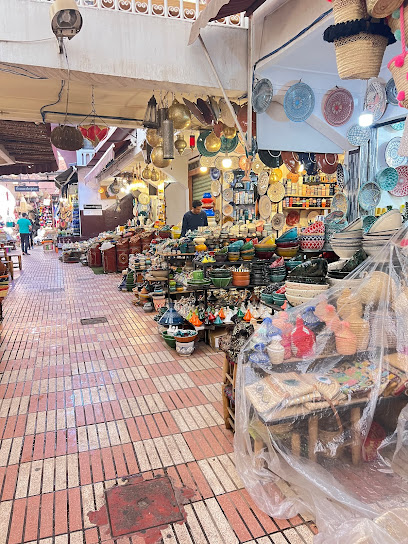
The Carpet Source
Explore the enchanting world of handmade rugs at The Carpet Source, where Moroccan artistry meets breathtaking landscapes in Ourika.
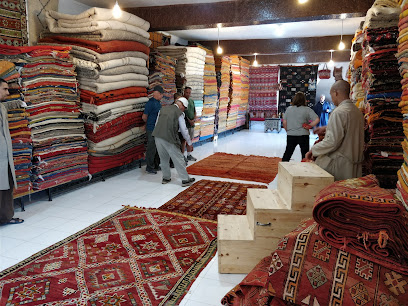
TISSIR JEWELLERY
Discover the artistry of Moroccan craftsmanship at Tissir Jewellery, where each piece tells a unique story of tradition and elegance.
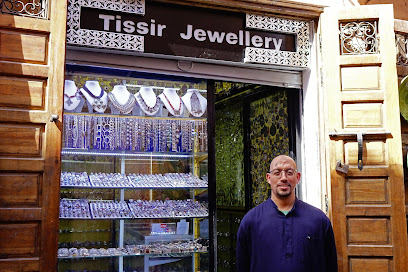
La kasbah d'ourika
Experience authentic Moroccan coffee culture at La Kasbah d'Ourika, a scenic retreat in the heart of Ourika Valley with stunning views.
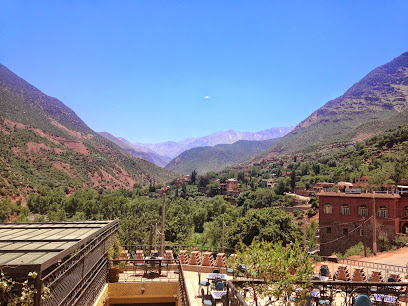
Chez Larbi Ourika Restaurant Maison d'hôtes
Experience authentic Moroccan cuisine at Chez Larbi Ourika, a charming guest house and restaurant in the breathtaking Ourika Valley.

Atika Marrakech
Explore Atika Marrakech for a unique selection of stylish and traditional footwear, reflecting the vibrant culture of Morocco.
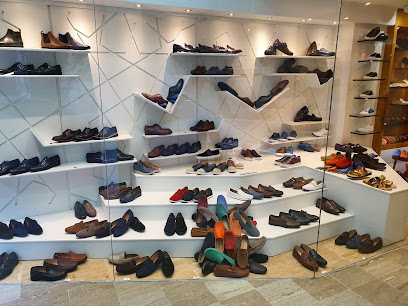
Dar Soulaimane Ourika Marrakech
Discover the serene beauty of Dar Soulaimane Ourika in Marrakech, where traditional hospitality meets breathtaking mountain landscapes.

Essential bars & hidden hideouts
Comptoir Darna
Discover the essence of Moroccan culture with exquisite cuisine and vibrant nightlife at Comptoir Darna, Marrakech's premier dining and entertainment venue.
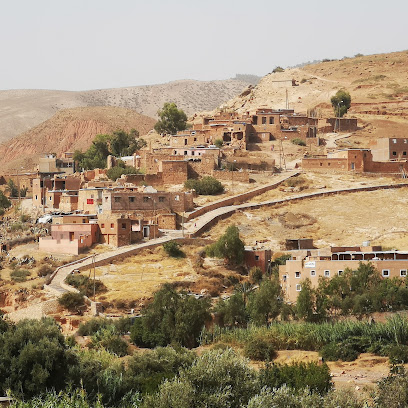
Le Salama Sky-bar
Discover the enchanting Le Salama Sky-bar in Marrakech, where stunning rooftop views meet exquisite Moroccan cuisine and vibrant nightlife.
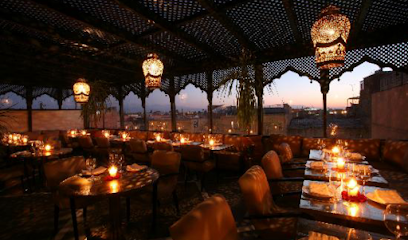
La muraille de l'ourika
Experience the authentic taste of Moroccan cuisine with stunning mountain views at La Muraille de l'Ourika in the enchanting Ourika Valley.
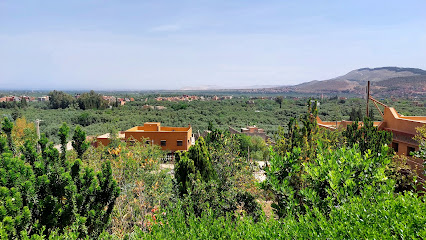
La Clé Des Huiles Ourika
Discover exquisite Moroccan cuisine at La Clé Des Huiles Ourika, where breathtaking views and authentic flavors create an unforgettable dining experience.
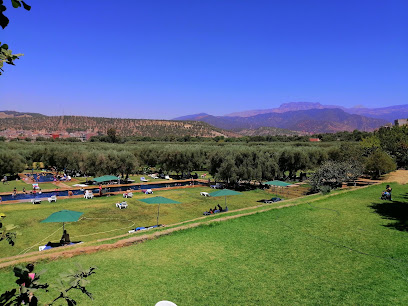
Sky Bar @Hotel Renaissance
Experience breathtaking views and vibrant nightlife at Sky Bar @Hotel Renaissance, Marrakech's premier rooftop bar for cocktails and local wines.
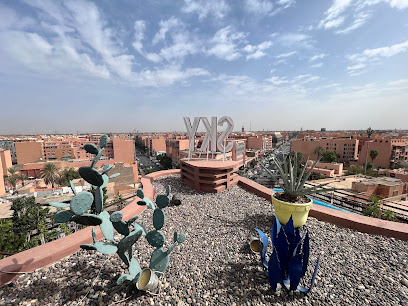
ouberge Kasbah tifirte
Discover the essence of Moroccan cuisine at Auberge Kasbah Tifirte, a charming restaurant that offers an authentic dining experience in a stunning setting.
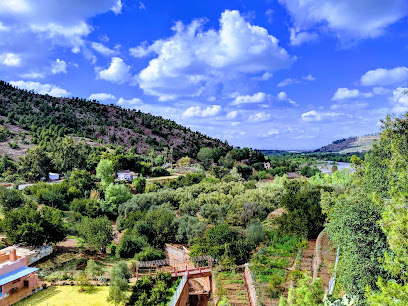
Café Restaurant Azaghar Ourika
Explore the flavors of Morocco at Café Restaurant Azaghar in Ourika, where traditional dishes meet stunning valley views.
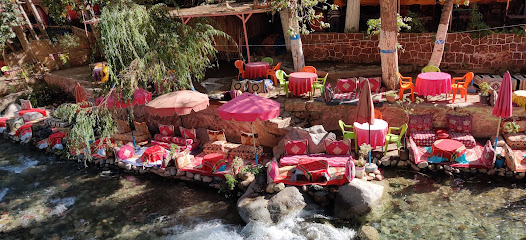
Agdal ourika
Discover Agdal Ourika, where traditional Moroccan flavors meet the breathtaking beauty of the Ourika Valley.

Chez Larbi Ourika Restaurant Maison d'hôtes
Experience the flavors of Morocco at Chez Larbi Ourika, where traditional cuisine meets breathtaking views in the heart of the Ourika Valley.

Restaurant Elzguerona
Experience the best of organic Moroccan cuisine amidst the stunning landscapes of Vallée d'Ourika at Restaurant Elzguerona.
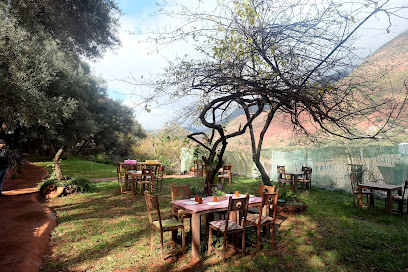
Yassmine Restaurant & Cafe
Experience authentic Moroccan flavors at Yassmine Restaurant & Cafe in the heart of Marrakech, an inviting culinary haven for every traveler.
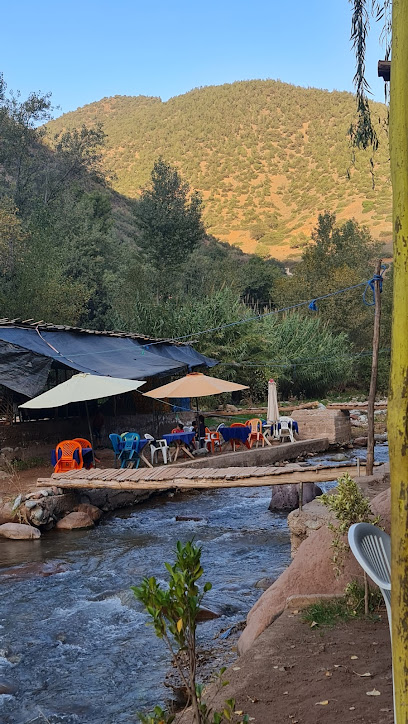
Churchill Bar
Discover the elegance of The Churchill Bar in Marrakech, where exquisite drinks and a luxurious atmosphere await you.
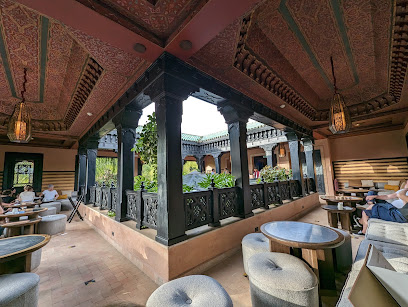
Restaurant Timalizen
Experience authentic Moroccan cuisine at Restaurant Timalizen in the beautiful Ourika Valley, a family-friendly gem offering rich flavors and warm hospitality.
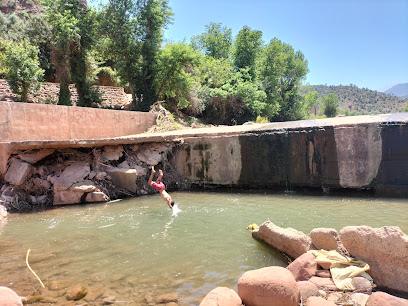
Café restaurant elJawhara vert
Discover the authentic flavors of Morocco at Café Restaurant ElJawhara Vert, where every dish tells a story.
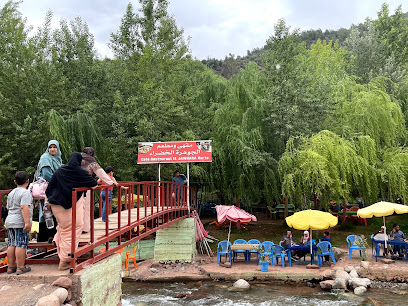
Cafè Restaurant Adrar
Experience the rich flavors of Moroccan cuisine at Cafè Restaurant Adrar, where tradition meets hospitality in a vibrant setting.
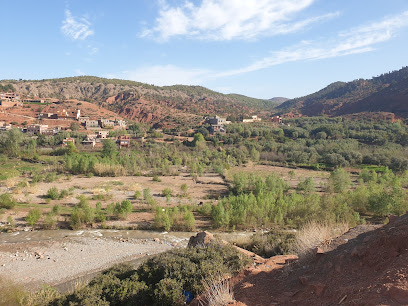
Local Phrases about Ourika Valley
-
- Helloسلام
[salam] - Goodbyeوداعا
[wada'an] - Yesنعم
[na'am] - Noلا
[la] - Please/You're welcomeمن فضلك
[min fadlik] - Thank youشكرا
[shukran] - Excuse me/Sorryعذرا
['udhran] - How are you?كيف حالك؟
[kayfa halik?] - Fine. And you?بخير. وأنت؟
[bikhayr. wa'ant?] - Do you speak English?هل تتحدث الإنجليزية؟
[hal tatahadath al'injlizia?] - I don't understandأنا لا أفهم
[ana la afham]
- Helloسلام
-
- I'd like to see the menu, pleaseأرغب في رؤية القائمة، من فضلك
[urghib fi ru'ya alqaima, min fadlik] - I don't eat meatأنا لا آكل اللحم
[ana la akl allahm] - Cheers!في صحتك!
[fi sahtik!] - I would like to pay, pleaseأود أن أدفع، من فضلك
[awad an adfa', min fadlik]
- I'd like to see the menu, pleaseأرغب في رؤية القائمة، من فضلك
-
- Help!النجدة!
[alnajda!] - Go away!انصرف!
[ansarf!] - Call the Police!اتصل بالشرطة!
[iatisal bialshurta!] - Call a doctor!اتصل بطبيب!
[iatisal bialtabib!] - I'm lostلقد ضللت الطريق
[laqad dalalt altariq] - I'm illأنا مريض
[ana mareed]
- Help!النجدة!
-
- I'd like to buy...أرغب في شراء...
[urghib fi shira...] - I'm just lookingأنا فقط أتفرج
[ana faqat atfarij] - How much is it?بكم هذا؟
[bikam hadha?] - That's too expensiveهذا غالي جدا
[hadha ghali jiddan] - Can you lower the price?هل يمكنك خفض السعر؟
[hal yumkinuk khafd alsar?]
- I'd like to buy...أرغب في شراء...
-
- What time is it?كم الساعة؟
[kam alssa'a?] - It's one o'clockالساعة الواحدة
[alssa'at alwahida] - Half past (10)النصف بعد (10)
[alnisf ba'd (10)] - Morningالصباح
[assaabah] - Afternoonالظهر
[alzuhur] - Eveningالمساء
[almasa'] - Yesterdayأمس
[ams] - Todayاليوم
[alyawm] - Tomorrowغدا
[ghadan] - 1واحد
[wahid] - 2اثنان
[ithnan] - 3ثلاثة
[thalatha] - 4أربعة
[arba'a] - 5خمسة
[khamsa] - 6ستة
[sitta] - 7سبعة
[sab'a] - 8ثمانية
[thamania] - 9تسعة
[tasia] - 10عشرة
[ashara]
- What time is it?كم الساعة؟
-
- Where's a/the...?أين ...؟
[ayn ...?] - What's the address?ما هو العنوان؟
[ma huwa al'anaan?] - Can you show me (on the map)?هل يمكنك أن تريني (على الخريطة)؟
[hal yumkinuk an tarini (ala alkharita)?] - When's the next (bus)?متى يأتي الحافلة التالية؟
[mata yati alhafilat altaliat?] - A ticket (to ....)تذكرة (إلى ...)
[tazkirat (ila ...)]
- Where's a/the...?أين ...؟
History of Ourika Valley
-
The Ourika Valley has been home to Berber communities for centuries. The indigenous Berber people, known for their unique language and culture, have inhabited the region since prehistoric times. Their traditional mud-brick houses and terraced agriculture are still visible, offering a glimpse into their ancient way of life.
-
In the 11th century, the Almoravid Dynasty, a Berber Muslim empire, established control over the Ourika Valley. This period saw the spread of Islam and the construction of mosques and religious schools. The Almoravids also initiated agricultural and irrigation projects, significantly influencing the valley's development.
-
The Ourika Valley has a significant Jewish history, with Jewish communities settling in the region during the Middle Ages. The village of Timalizine is particularly notable for its Jewish heritage. The remnants of synagogues and cemeteries serve as a testament to the once-thriving Jewish population.
-
During the early 20th century, Morocco became a French protectorate, and the Ourika Valley was no exception to colonial influence. French authorities introduced modern infrastructure, including roads and healthcare facilities. The blend of French and traditional Berber architecture from this era can still be seen in the valley.
-
In contemporary times, the Ourika Valley has become a popular tourist destination, known for its natural beauty and cultural richness. The valley's residents continue to preserve their traditional Berber lifestyle while also embracing modernity. Festivals, local markets, and artisanal crafts reflect the vibrant culture of the area.
Ourika Valley Essentials
-
Ourika Valley is located about 30 kilometers south of Marrakech, Morocco. The most common way to get there is by car or taxi from Marrakech, which takes approximately 1 to 1.5 hours. Buses and organized tours are also available for those who prefer not to drive. The nearest airport is Marrakech Menara Airport (RAK), which is well-connected with major international destinations.
-
While in Ourika Valley, local transportation options include taxis, which are abundant and relatively inexpensive. Renting a car provides more flexibility to explore the valley and its surroundings at your own pace. For a more local experience, consider using shared taxis (known as 'grand taxis') that connect different parts of the valley. Walking and hiking are also popular ways to explore the scenic landscapes.
-
The official currency in Morocco is the Moroccan Dirham (MAD). Credit cards are accepted in some hotels, restaurants, and shops, but it is advisable to carry cash, especially in rural areas and small establishments. ATMs are available in Marrakech, so it is recommended to withdraw sufficient cash before traveling to Ourika Valley.
-
Ourika Valley is generally a safe destination for tourists. However, standard precautions should still be taken. Avoid walking alone at night in unfamiliar areas and keep an eye on your belongings in crowded places. While crime rates targeting tourists are low, it's always best to stay vigilant and aware of your surroundings.
-
In case of emergency, dial 19 for police assistance and 15 for medical emergencies. It is advisable to have travel insurance that covers medical emergencies. For minor health issues, there are pharmacies in the valley where you can purchase over-the-counter medications. The nearest comprehensive medical facilities are in Marrakech.
-
Fashion: Do dress modestly, especially when visiting religious sites. Avoid wearing revealing clothing. Religion: Do respect local customs and traditions. Always remove your shoes when entering mosques. Public Transport: Do be respectful and give up your seat to elderly passengers. Don't eat or drink on public transport. Greetings: Do greet people with a handshake or a slight bow of the head. Eating & Drinking: Do try local delicacies and accept food offerings graciously. Don't refuse hospitality, as it is considered impolite.
-
To experience Ourika Valley like a local, visit the weekly souks (markets) where you can buy fresh produce and traditional Moroccan goods. Engage with locals, as they are often friendly and willing to share stories about the valley's history and culture. Don't miss visiting the Setti Fatma waterfalls, which are a popular destination for both locals and tourists. For a unique experience, consider taking a guided trek into the Atlas Mountains, which offers breathtaking views and a deeper understanding of the local Berber culture.
Trending Landmarks in Ourika Valley
-
Setti Fadma ( Ourika Valley & 7 Cascades)
-
Terres D'Amanar
-
Cascades Ourika
-
Anima (André Heller Garden)
-
Smile Park
-
La vallée d'ourika
-
Dar Ikalimo Ourika
-
Kasbah Bab Ourika
-
Ourika Valley Waterfalls
-
Maison du meunier berbère
-
Paradis du Safran Maroc
-
Dar Soulaimane Ourika Marrakech
-
Ourika
-
Le Douar Berbère Eco Hôtel Ourika Valley
-
Ourika Lodge
Nearby Cities to Ourika Valley
-
Things To Do in Taroudant
-
Things To Do in Essaouira
-
Things To Do in Agadir
-
Things To Do in Casablanca
-
Things To Do in Meknes
-
Things To Do in Fes
-
Things To Do in Chefchaouen
-
Things To Do in Asilah
-
Things To Do in Tetouan
-
Things To Do in Tangier
-
Things To Do in Europa Point
-
Things To Do in Gorham's Cave Complex
-
Things To Do in St. Michael's Cave
-
Things To Do in Alameda Botanic Gardens
-
Things To Do in Queensway Quay Marina








